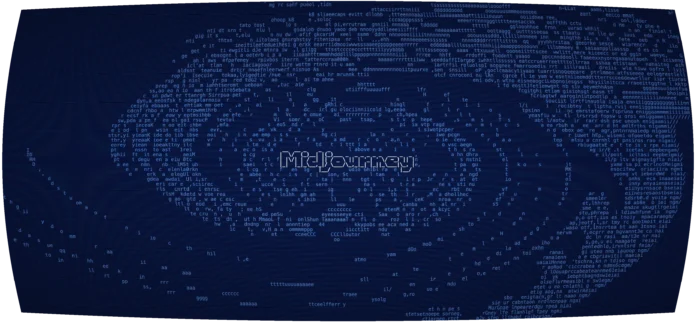In this article, we will see how to get the bounding-box of different shapes. We will use P5.js which is a Javascript framework creative programming environment and is very much inspired by Processing.
Bounding-box: A bounding-box is basically just a rectangle that bounds a shape more technically it is the rectangle with the smallest possible surface area that bounds the shape. A bounding-box can have rotation (called global bounding-box) but in this article, we’ll be focusing around the axis-aligned bounding boxes (AABB shapes) which have zero rotation in them (also called local bounding-box)
Note: A Bounding-Box for a shape is the rectangle with the smallest possible surface area that bounds the shape.
Reason to calculate bounding-box: A bounding-box acts as a container of a shape and has several applications in graphical applications (most notably used by GUI libraries for widget-masks). Since a bounding-box contains the shape so if any other shape doesn’t intersect with the bounding-box then it also doesn’t intersect with the inner-shape thus bounding-boxes are used heavily in Physics engines (such as Box2D) for broad-phase collision detection.
Base for the p5.js: This is the base-code (normally for every p5.js code).
<!-- Our main HTML file! --><html> <head> <script src="sketch.js"></script> </head> <body> </body> </html> |
Note: We will only change script.js at every iteration, and the HTML file will necessarily remain intact!
- Finding bounding-box of an ellipse:
/* p5.js Sketch for finding and drawingbounding-box of an ellipse*/functionsetup(){createCanvas(480, 360);}// Draws bounding-box around the// given ellipse!functiondrawBBox(x0, y0, r1, r2){// Draw only the outline// of the rectanglenoFill();// Draw the outline in redstroke(255, 0, 0);rect(x0-r1, y0-r2, 2*r1, 2*r2);}functiondraw() {let x0 = width/2, y0 = height/2;let r1 = 180, r2 = 100;// Note that `ellipse` takes in// diameters not radii!ellipse(x0, y0, 2*r1, 2*r2);drawBBox(x0, y0, r1, r2);// We don't want to draw this// over and over againnoLoop();}Output:
- Finding bounding-box of a circle: It is same as an ellipse, since a circle is just a special case of an ellipse with same radii (same semi-major-axis and semi-minor axis).
- Finding bounding-box of a line-segment
/* p5.js Sketch for finding and drawingbounding-box of a line-segment*/functionsetup() {createCanvas(480, 360);}// Draws bounding-box around the// given line-segment!functiondrawBBox(x1, y1, x2, y2) {stroke(255, 0, 0);noFill();let x = min(x1, x2), y = min(y1, y2);let w = max(x1, x2) - x, h = max(y1, y2) - y;rect(x, y, w, h);}functiondraw() {let x1 = 280, y1 = 80, x2 = 180, y2 = 280;line(x1, y1, x2, y2);drawBBox(x1, y1, x2, y2);noLoop();}Output:
- Finding bounding-box of a triangle: Finding bounding-box of a triangle is very similar to finding bounding-box for line-segment.
/* p5.js Sketch for finding and drawingbounding-box of a triangle*/functionsetup() {createCanvas(480, 360);}// Draws bounding-box around the// given triangle!functiondrawBBox(x1, y1, x2, y2, x3, y3) {stroke(255, 0, 0);noFill();let x = min(x1, x2, x3), y = min(y1, y2, y3);let w = max(x1, x2, x3) - x, h = max(y1, y2, y3) - y;rect(x, y, w, h);}functiondraw() {let x1 = 240, y1 = 80, x2 = 140;let y2 = 280, x3 = 340, y3 = 280;triangle(x1, y1, x2, y2, x3, y3);drawBBox(x1, y1, x2, y2, x3, y3);noLoop();}Output:
- Finding bounding-box of a polygon: A triangle is a polygon, and if we find the bounding-box of a triangle then finding bounding-box for polygon shouldn’t be any difficulty. We just have to generalize so that we can have any number of vertices and we are done.
/* p5.js sketch for finding and drawingbounding-box of a polygon*/functionsetup() {createCanvas(480, 360);}// Draws bounding-box around// the given polygon!functiondrawBBox(x, y) {stroke(255, 0, 0);noFill();let rx = min(x), ry = min(y);let w = max(x) - rx, h = max(y) - ry;rect(rx, ry, w, h);}functiondraw(){/* Vertices for a star-polygon (decagon) */let x = [240, 268, 334, 286, 298,240, 182, 194, 146, 212];let y = [80, 140, 150, 194, 260,230, 260, 194, 150, 140];beginShape();for(let i = 0; i < x.length; ++i)vertex(x[i], y[i]);fill(255, 217, 0);// If you don't CLOSE it then it'd// draw a chained line-segmentendShape(CLOSE);drawBBox(x, y);noLoop();}Output:
Finding Bounding-Boxes is an important part of visualization applications. Also in dynamic applications such as games, one cannot compute capsule-collision detection at every frame without entailing a punishment in the performance. So before any complex collision-checking, a broad-phase check is made for early exit which returns false as soon as it is ascertained that the shape doesn’t collide with the other shape. If the broad-phase check is passed then comes the narrow-phase where the actual collision-detection (OOBB, SAT, capsule, ellipsoid, etc) happens! Hence finding the bounding-box is an important part of many graphics-rich applications for various reasons.


